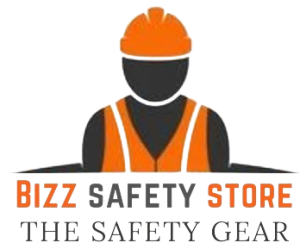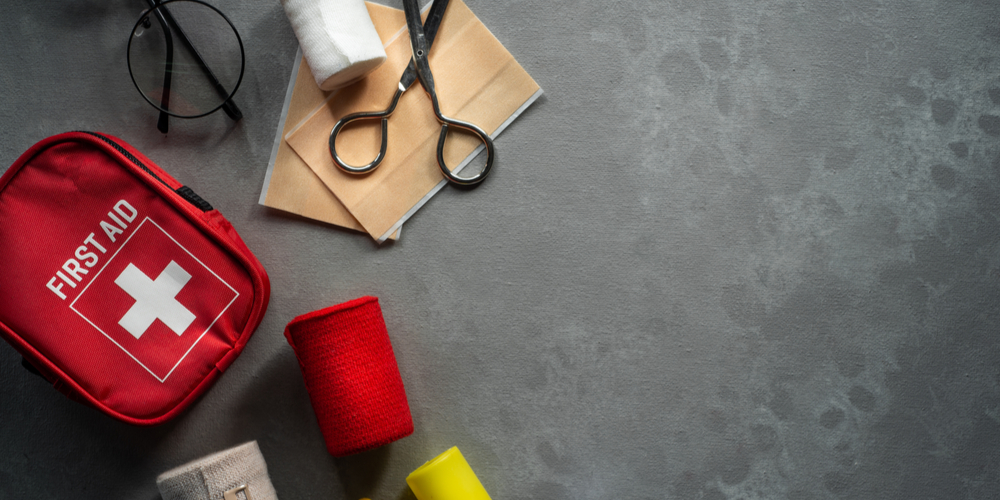First aid and Emergency procedures
What is First Aid?
First aid refers to medical attention that is usually administered immediately after the injury occurs and at the location where it occurred. It often consists of a one- time, short-term treatment and requires little technology or training to administer. First aid can include cleaning minor cuts, scrapes, or scratches; treating a minor burn; applying bandages and dressings; the use of non-prescription medicine; draining blisters; removing debris from the eyes; massage; and drinking fluids to relieve heat stress. OSHA’s revised record keeping rule, which went into effect January 1, 2002, does not require first aid cases to be documented. For example:
A worker goes to the first-aid room and has a dressing applied to a minor cut by a registered nurse. Although the registered nurse is a health care professional, the employer does not have to report the accident because the worker simply received first aid. The selected references below provide more information on first aid.
Planning for an emergency helps you to:
Minimise the time taken for the emergency services to reach you
Minimise the risk to operators if there is an emergency
Include environmental and other emergencies in your plan.
Employers and the self-employed need to assess the first aid requirements of their work. Make sure there are enough trained first aiders and facilities to help casualties of illness or injury immediately, and that an ambulance or other professional help can be summoned without delay.
You should also identify which items need to be in the worksite first aid kit.
Your first aid assessment
Your first aid assessment should take account of:
The nature of the work
The history and consequences of injuries
The nature and distribution of the workforce
The remoteness of the site from the emergency services, including location, terrain and weather conditions
Working on shared or multi-occupied sites
Holidays and other absences of first aiders
The presence of trainees and the public
The possibility of medical conditions or allergies.
First aid kit
You should carry a personal first aid kit on you while at work. Make sure you have received suitable training on using its contents. It should contain at least one or more hemostatic dressings, a tourniquet, a pair of plastic gloves and a Resusciade (or similar device). Keep a worksite first aid kit at a central location.
Emergency procedures
For any emergency procedures to work well, all operators and managers must aware of the procedures and have the opportunity to test them. You should test, evaluate and modify your procedures to ensure they are working. Ensure you know your location. Be able to provide OS grid references or GPS coordinates, and access points from the main road into the forest or woodland.
You should also anticipate problems that will exist in getting to a casualty, eg the need for aerial tree rescue, or releasing a casualty who is trapped below a tree or heavy equipment. Identify the personnel and equipment that need to be on site and set up how to quickly contact other people you need.
The 7 Steps of First Aid
In moments of crisis, knowing how to act effectively can be the dividing line between relief and tragedy. First aid, the initial assistance given to a victim of injury or illness, involves simple yet vital procedures that can sometimes mean the difference between life and death. The significance of first aid extends beyond saving lives; it also aids in reducing pain and the severity of an injury during an emergency. Unfortunately, many don’t have the training to perform these critical skills.
Let’s work to bridge that gap with an easy-to-understand guide on the 7 Steps of First Aid. Whether you’re a concerned parent, an adventurous traveler, or someone who wants to be prepared for emergencies, this guide will equip you with the basic knowledge and confidence needed to take action in critical situations.
Step 1: Ensure Safety
Ensuring safety is the first and foremost first aid step, as it is crucial to make sure that both the first aider and the person in need are not put into further danger. Remember, your safety
is paramount. You will not be able to help someone else if you become injured or incapacitated. Always be mindful of the risks and act wisely.
Step 2: Call for Help
Knowing when to call 911 is crucial during a first-aid situation. Certain conditions and incidents are time-sensitive and require immediate professional medical intervention. When calling emergency services, try to stay calm and provide clear information about the location, the condition of the injured person, and any other relevant details. Also, follow any instructions given by the emergency dispatcher.
Step 3: Assess the Situation
Evaluating the injured person’s condition is a critical step in first aid, as it helps determine the appropriate actions to take. Remember, while evaluating an injured person’s condition, it’s crucial to stay calm and focused. If you are uncertain of what to do, it’s best to wait for professional help while ensuring that the person is safe and as comfortable as possible.
Step 4: Provide Basic First Aid Procedures if Necessary
If you have taken a first-aid training course, you have learned at least 10 basic first-aid procedures. These may include techniques to address
CPR
AED
Choking (Heimlich Maneuver)
First Aid Basics
Medical Emergencies
Trauma
Bleeding
Amputations
Poisoning
Environmental
This is the time to use what you know.
Step 5: Provide Comfort and Reassurance
Providing comfort and reassurance is a vital component of first aid that often gets overlooked. A calm and supportive presence can help reduce an injured person’s anxiety and pain levels, and can also make them more cooperative during the treatment process.
Step 6: Handover to Professional Medical Help
Handing over to professional medical help is a critical final step in first aid. When emergency services arrive, it’s essential to communicate effectively to ensure that the injured person receives the best possible care.
The Most Important Step
The most important of our 7 steps of first aid actually comes first–because without it, you may be less prepared to help in an emergency. That step is to complete a first aid training course.
Take this crucial step today!

